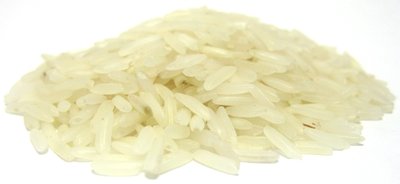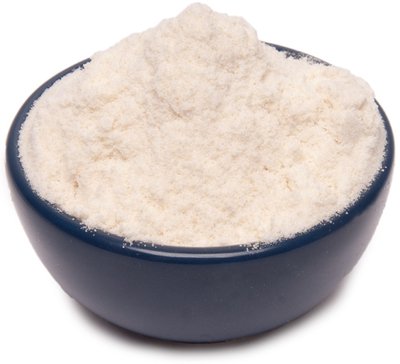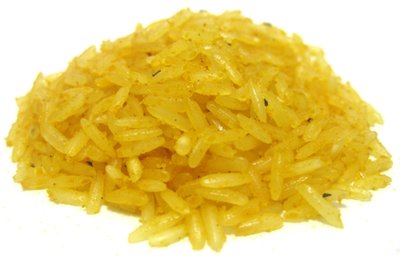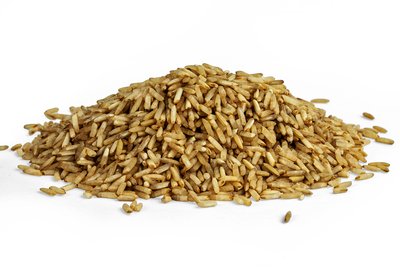Gluten-Free Rice
Sort by:
Our commitment to gluten-free products
While we’ve always sold naturally gluten-free products, we’ve gone a step farther to offer an even wider range of trusted, affordable, and certified gluten-free products.
- We analyzed ingredients, vetted suppliers, and got facility certificates ensuring non-contamination of ingredients and production aids.
- We completely segregated our production lines to eliminate any possibility of cross-contamination.
- We established policies and procedures to ensure compliance and randomly test products in our gluten-free production room.
- Not only do we voluntarily comply with USDA federal guidelines, but we’re also certified by the Gluten-Free Certification Organization.
- We show the GF logo on each product page that is gluten-free.
Rice is a cereal grain that has been harvested for upwards of 8 millennia, endowing it with a rich cultural background. It is currently one of the world’s most popular staples and is the most important grain in regards to human consumption- providing more than 20% of the world’s total caloric intake. There are two central species of the grass from which these seeds grow, though innumerable varieties of the grain exist.
Each type of rice varies in texture, taste, and appearance; the typical culinary distinctions of the grain are determined by its length and include short-, medium-, and long-grained varieties. A second distinction of the seeds is a separation by color; rice species differ in color due to genetic variation that causes unique pigmentation. Some of these rices may also lose their vibrant outer layer when hulled such that the vibrant bran is removed from the rest of the seed.
In general, colored rices are more nutritious than their processed counterparts with black rice offering the most nutritive value. Black rice is rich in essential antioxidants and also contains large quantities of iron and vitamin E. Black, red, and brown rices are all rich in fiber and contain more healthy fats than white rice. These pigmented grains also offer a rich, nutty flavor.
As white rice has been processed to have its nutritious bran and germ removed, it lacks much of the nutritive value of other rices and is principally composed of carbohydrates. There are benefits, however, to this procedure; white rice has a much longer shelf life than whole grain rices and typically cooks faster as well.
Types of Rice
There are more than 40,000 varieties of Asian rice (Oryza sativa) alone, though notably fewer varieties of African rice (Oryza glaberrima). These types are typically identified by a few notable characteristics of the grain. These factors include the geographic origin of the variety, the length of the grain, and the color of the seeds. Due to the preponderance of properties that vary from grain to grain, there are actually several overlapping organizations for the seed.
Though there is a significant difference between processed white rice and whole colored rices, the more notable differences between all colors of rice are associated with the length of the grain. The section below breaks apart the types based on grain length, and discusses a second matrix of classification within this hierarchy that includes four principal types based largely on the trade patterns associated with the grain: indica, japonica, aromatic and glutinous.
Short Grain Rice
“Spanish-Japan” or stout grain rice, as this length is also known, absorbs less water than other varieties- giving it a starchier and stickier consistency. Short grain rices can be broken into two varieties: glutinous and japonica. Glutinous rice, named for its glue-like tendency to stick together, is ideal for dishes that require a cohesive consistency and is used in Japan to make mochi and other chewy treats. A similarly sticky rice, japonica is the variety used to make sushi and sake (fermented rice wine).
Both varieties of short grain rice are high in amylopectin, a highly digestible element of starch that accounts for the high glycemic value of the grain. Though both varieties are similar in texture, glutinous rice is more opaque, shorter, and stickier when cooked. Additionally, some varieties of japonica rice may fall under the classification of medium grain rice.
Medium Grain Rice
Medium grain rice, or patna rice, is typically more moist than long grain varieties but is not as sticky as the shorter grains. This consistency provides the perfect palate for risottos, desserts, and puddings. Though medium grain rice does contain less amylopectin than short grain rice, its concentration of the polysaccharide is still dense enough to warrant a high glycemic load, meaning these grains should also be avoided by diabetics.
While some medium grain rices are classified as japonica, others still are either aromatic or indica varieties. Aromatic rice, as the name suggests, is defined by a potent nutty odor which also manifests as a sharp earthy taste; this category of rice includes popular varieties such as jasmine, basmati, and wild pecan. Indica rice tends to be a bit more narrow and flat than japonica varieties, with many strains of the grain falling into the long grain category.
Long Grain Rice
Also known as Carolina rice, long grain rice is typically slender and easily prepared, cooking to form a fluffy consistency. Long grain varieties are commonly used as in soups, entrees, pilafs, or as a side dish. These seeds are high in amylose, a component of starch that is more resistant to digestion. The high concentration of amylose in this rice makes the rice less sticky, but it also reduces the glycemic load of the food. This means it does not cause as large of a spike in blood sugar as other varieties of the seed and, consequently, may be safer for diabetics than short grain varieties.
There are many types of long grain rice including japonica, aromatic, and indica. Of the long grain varieties of rice, indica rice tends to have the highest concentration of amylose, followed by javanica rice. Aromatic, indica, and javanica rice are native to the South-East Asia. Specifically cultivated in the Philippines, javanica rice is not considered one of the four principle types of rice defined by trade.
By contrast, though all rice owes its original domestication to select areas of Asia, indica rices were domesticated further in India, Myanmar and Thailand while japonica rice saw a second domestication in China and Vietnam.
How to Cook White Rice
White rice is easy to make and provides a great side dish for any meal. One of the most common varieties, long grain white rice can be cooked by following the steps below:
- Boil 1½ cups of water or broth for each cup of rice you would like to cook.
- Add rice to the pot, stirring over medium-high heat. Add salt to taste.
- Reduce heat to low and cover the pot. Allow the rice to simmer for 16 minutes. Remove the lid and check to see that the rice has absorbed the liquid. The surface of the rice should feature small pockets spread throughout. If these pockets have not yet formed, cover the rice and let it continue to simmer for another 2 - 3 minutes.
- Remove the rice from the heat and let sit, covered for another 10 minutes.
- Fluff with a fork and serve.
As stated, this recipe can be scaled up to cook more rice than a single cup. Each cup of uncooked rice will yield approximately 2 cups of cooked rice.
Rice Nutrition
Rice offers an abundant supply of energy and, as previously stated, accounts for more than one-fifth of the caloric intake of the world’s population. While this is great for developing nations, others may want to avoid calories that don’t offer an abundance of nutrients as well. The nutritional value of the grain will vary depending on both the length of grain and the color.
The ubiquitous long grain white rice consists largely of highly digestible carbohydrates, meaning it may cause a spike in blood sugar and should typically be avoided by those with select health concerns. Though white rice does offer a modicum of protein, most nutritional value offered by rice is found in the bran. Since white rice has been processed to remove the bran from its grain, it offers the least nutritive value.
The good news is that this means all other forms of rice (red, brown, and black) offer plenty more nutrients than your standard white variety. Though the length of the grain will also play a role in the grain’s nutritive value, colored rices are rich in antioxidants. Specifically, red and brown varieties are chock full of fiber, B vitamins, zinc, calcium, iron, and other essential nutrients. Red rice stands out from brown rice in that it is typically fat free.
The standout candidate for your rice selection is black rice. This superfood is rich in the same nutrients as red and brown rice while also providing ample amounts of protein; for example, there are a whopping 7 grams of protein per 50-gram serving of our Northern Wild Rice variety. The ebony seed also offers ample amounts of Vitamin E and contains less than 1 gram of fat per serving.










